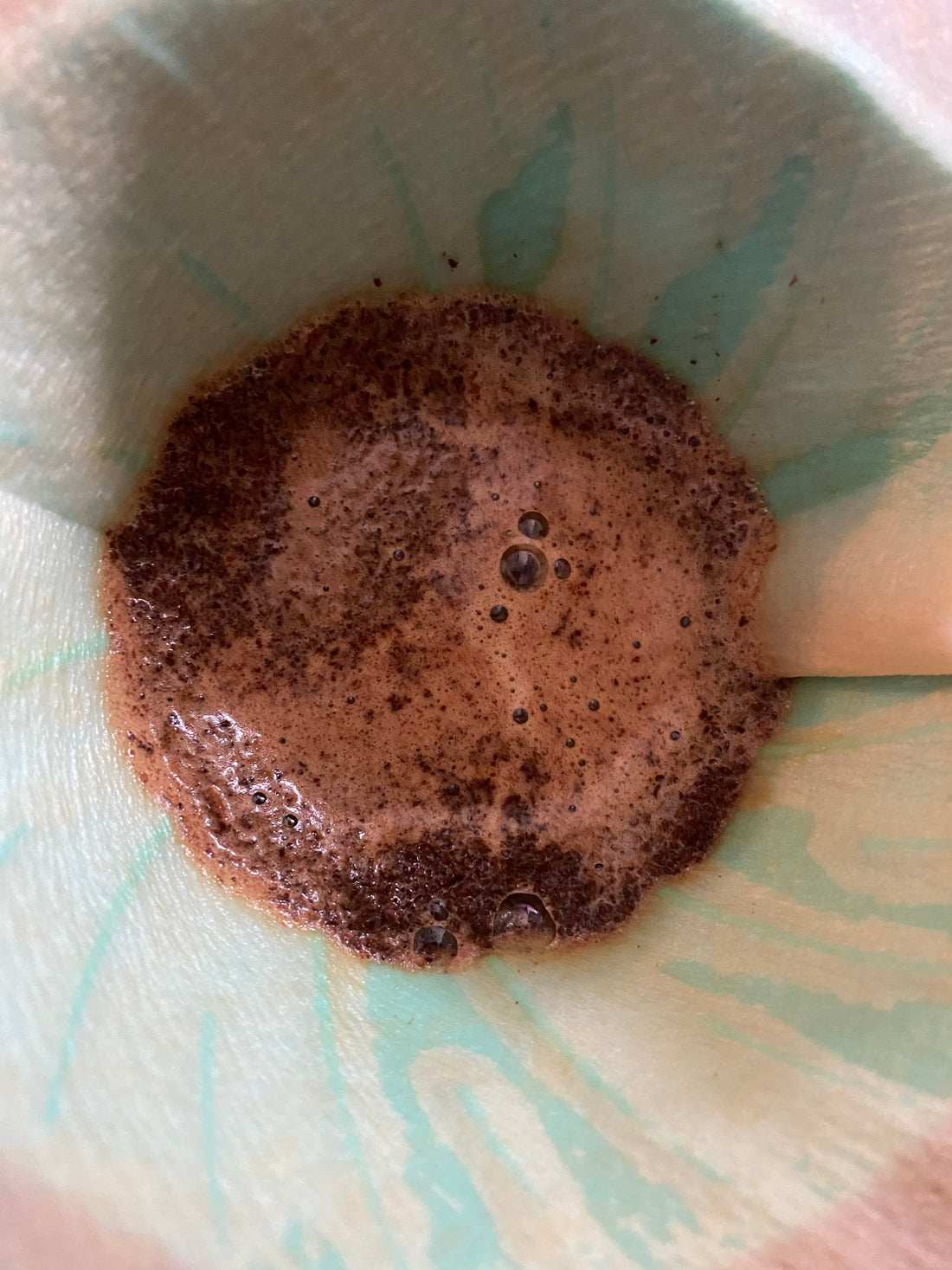By James Gallagher for Steampunk Coffee
Over the last week, I have been experimenting with the Chemex and I have noticed a few differences between the Chemex and the V60. While both devices are technically pour-overs -- you pour water over the coffee grounds and the coffee liquid drips through a filter -- they work in slightly different ways. I'd like to take some time to reflect on the differences between these devices and what you should consider if you want to buy either a V60 or a Chemex.
So far this year I have learned to use three pour-over devices: the Kalita Wave, the V60, and the Chemex. My Kalita Wave got me hooked on pour-over brewing. I love the cup profile I can achieve: a cup without sediment or too many oils. Then I explored further, trying out the V60. It took a while to get a recipe that I enjoyed but when I did I was making consistently delicious cups. The Chemex came to mind after seeing so many people online use the device. I wondered to myself: how would the Chemex compare to the V60 and the Kalita Wave? Would I be able to produce a better cup with the Chemex?
Filters
One of my first thoughts when I started brewing with the Chemex was that the filters are big. Indeed, the filters for the Chemex are much larger than the V60 and Kalita Wave filters. Notably, the square Chemex papers take up a lot of space when you put them in your Chemex. (You can get cone-shaped filters but I see the square papers are more common. I use the square papers.)
I find that it is difficult for me to get my gooseneck kettle really close to the coffee in the Chemex because the paper creates a tall wall around the device. This means that sometimes I end up pouring faster than I want or missing parts of the coffee bed that I want to soak with new water. While I have not noticed any adverse impacts on my cup, I do sometimes knock the filter with my gooseneck kettle, which I do not like when I am brewing coffee. The Hario V60 filters I use fit just right into the V60; they are slightly bigger than the device, but not by too much. So, I can get my gooseneck really close into the V60.
Because the Chemex filters are much larger than the V60 ones, I have to use more water to rinse my Chemex filters. This morning I used over 150 grams of water to fully rinse my Chemex papers. While I could use less, I want to make sure I do not get any papery taste in the final brew. Also, I want to make sure the Chemex filter adheres to the side of the Chemex before I start brewing, and to do so I need to use a bit more water. The V60 paper is smaller and so I can use less water rinsing the filter.
Grind Size and Brew Times
I use a coarser grind on my Chemex than I do with my V60 (20 and 15 on my Baratza Encore, respectively). This is necessary because water flows through the Chemex much slower than it does on the V60, a result of the extra paper used in the Chemex filter. I can usually brew a V60 on a 15 grind setting in around two minutes, sometimes a bit more. My Chemex, on the other hand, takes at least four minutes to make one cup. I can sometimes be waiting six minutes if I am brewing two cups, even if I use a coarser grind setting.
I hear a lot of people talk about how you should dial in your Chemex for time. If your Chemex is brewing really slowly, consider using a coarser grind. I may go a notch coarser for brewing two cups because even at the 22 setting on my grinder my coffee still takes a long time to brew. Ideally, I'd love to brew two cups in about five minutes rather than six minutes or more.
Design
The Chemex has an iconic design. You will probably hear someone cite the fact the Chemex is in museums like the Museum of Modern Art (MOMA). Indeed, the Chemex is not only a practical coffee brewer, but it is aesthetically pleasing. I love how coffee looks in a Chemex. You can tell the Chemex was thoughtfully designed by paying attention to the little details. There is a glass bulge in the bottom carafe which shows you when the Chemex is half-full. The Chemex has a wooden collar which can be detached by a string for easy cleaning.
The V60 is designed to be placed on top of a single cup. This means that you can brew on anything, such as straight into a mug or another carafe. The advantage of placing the V60 directly on a cup is that you can heat up that cup with the same water you use to rinse your filter. If you use the Chemex, you have to preheat both the Chemex and the cup separately to ensure they are both at a good temperature.
You will notice the V60 has ridges along the sides. These ridges help air to flow into the device and promote the flow of water through the bed of coffee. The Chemex, on the other hand, has a long spout that goes from the bottom carafe up to the top of the device. This spout ensures that there is good air flow near the filter and that an air lock does not form in the bottom of the brewing device. Without this spout, the coffee trying to flow into the bottom of the brewer would not be able to displace the air in the carafe so the brew would stop.
Cup Profile and Price
Both the V60 and the Chemex produce delicious cups of coffee. I find the Chemex is slightly cleaner than the V60 and I can usually taste a bit more sweetness through the Chemex. I think this is down to the filter. The Chemex filter is thicker than the V60 one so the Chemex can filter out more oils. With that said, the V60 also produces a sweet cup, and I'd happily drink a cup from both devices.
Let's talk about cup profile in terms of the price for each device. Whereas the Chemex costs upwards of 30 pounds depending on what model you buy, the entry-level plastic V60 is only about six or seven pounds. So, you can get started with a V60 cheaper than you can with a Chemex. But, I think the price of the Chemex is justified based on the cup quality.
I have enjoyed experimenting with both the V60 and the Chemex. My recipe for the V60 works just fine on the Chemex. If I want to brew more cups on the Chemex, I use a coarser grind, more coffee, and more water per pour. I like that I can brew two cups easily in the Chemex; the aesthetics are not something I can forget about either. Everyone has their own preference. Some people do not like the Chemex; others love it. Try them both and see what you think.
Contributed by James Gallagher, a home brewer and coffee enthusiast. View his excellent blog at jamesg.blog

